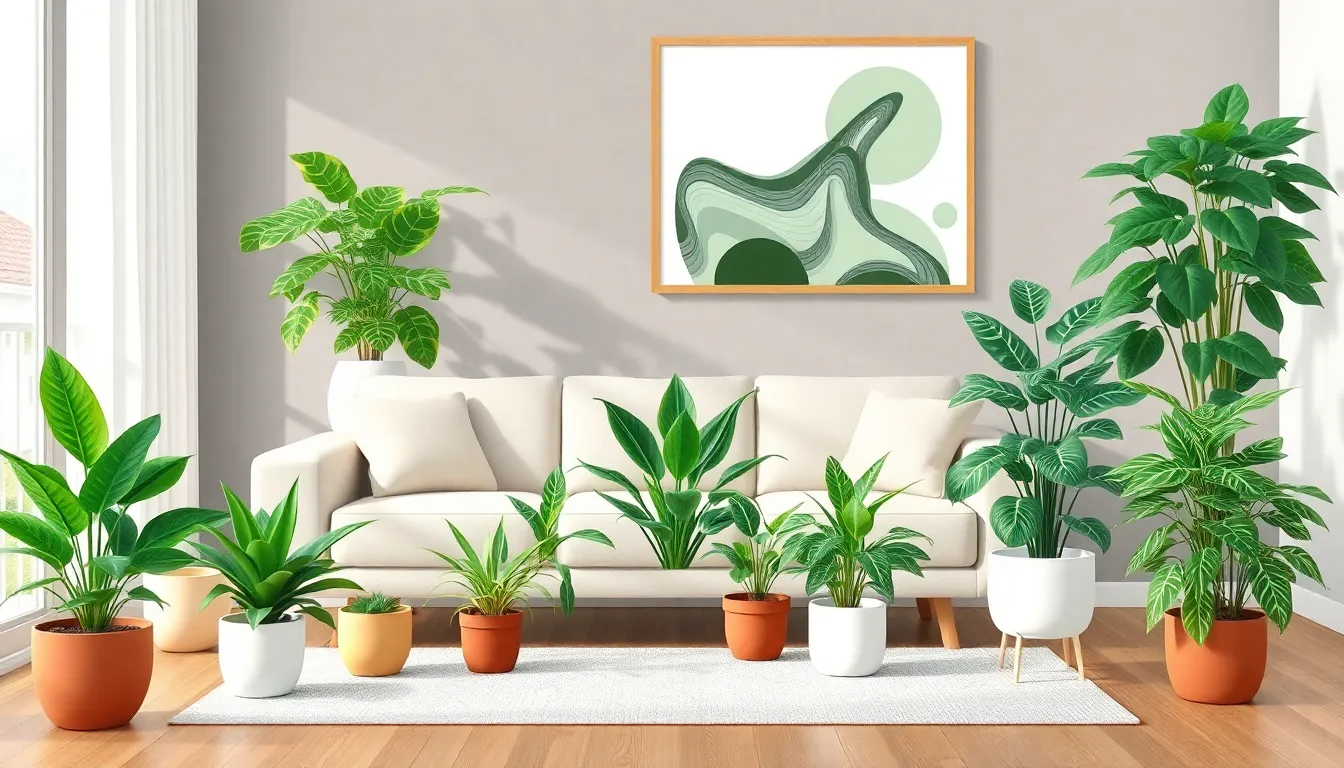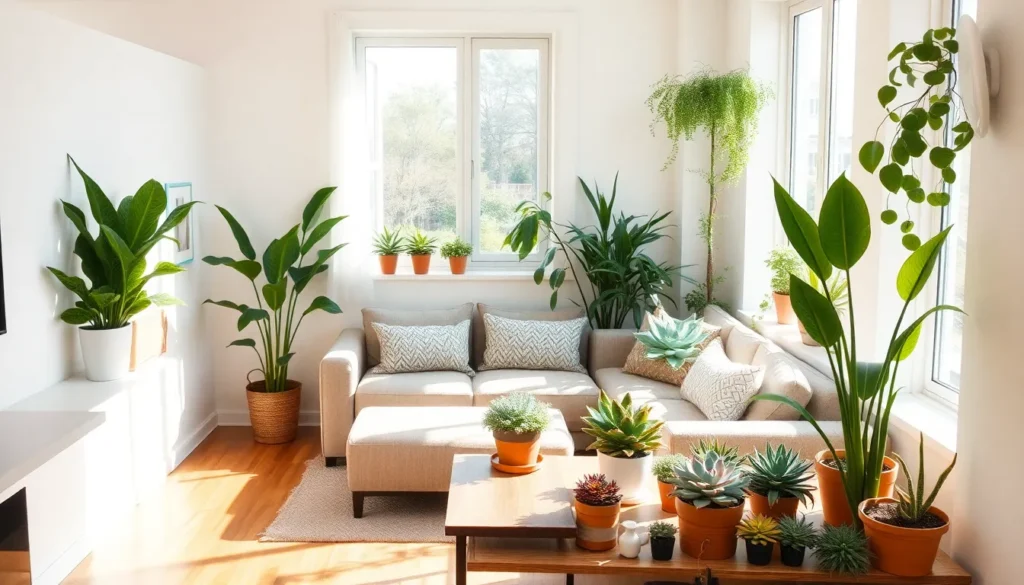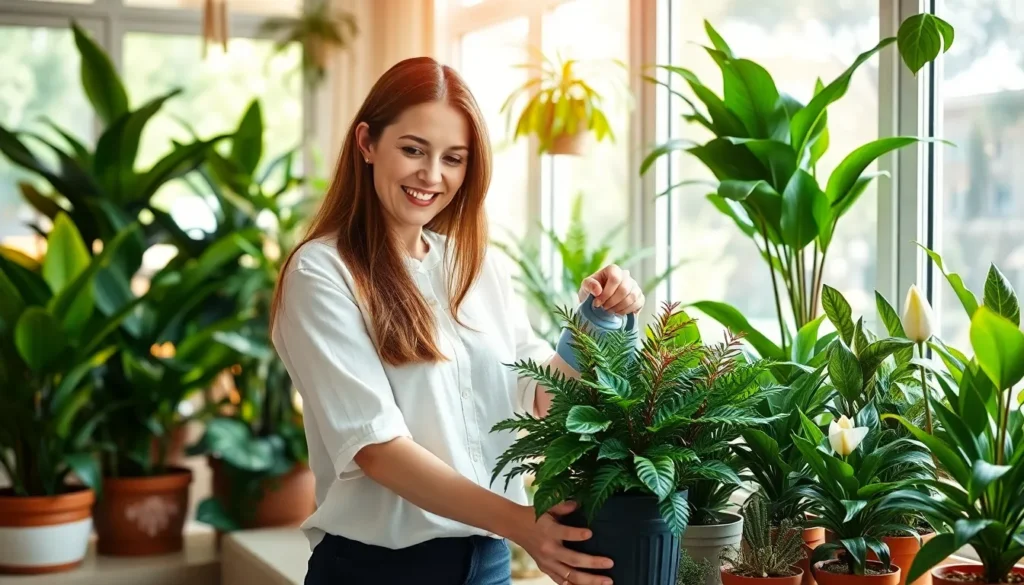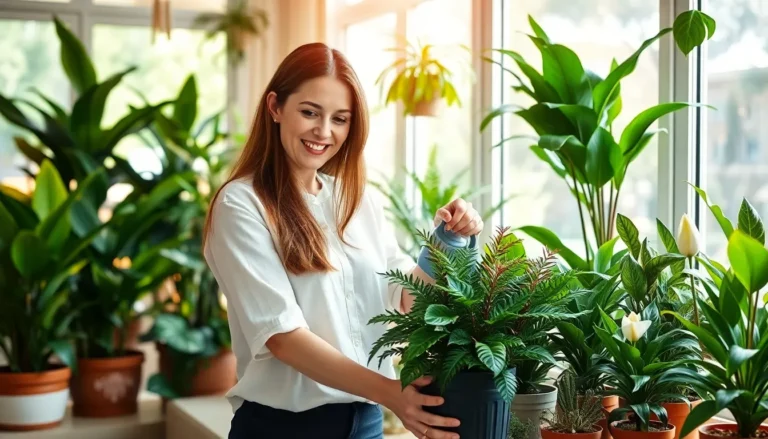Table of Contents
ToggleHouse plants are like the unsung heroes of home decor. They bring life to any space and can even boost your mood—who knew a little greenery could work such magic? From the low-maintenance succulent to the dramatic monstera, these leafy companions come with names that are as charming as their presence.
If you’ve ever found yourself in a plant shop, staring blankly at a sea of green and wondering what to call them, you’re not alone. Knowing the names of common house plants not only makes you sound like a botanical expert but also helps you care for them like a pro. So let’s dive into the world of house plants and discover the names that’ll make you the envy of your friends—because who wouldn’t want to brag about their thriving pothos or resilient snake plant?
Common House Plants Names
House plants add beauty and character to indoor spaces. Familiar names can make plant care easier and enhance conversations about gardening. Here’s a list of some common house plants along with their features.
- Snake Plant: Known for its upright leaves, this plant thrives in low light and requires minimal watering.
- Pothos: This trailing vine adapts well to various light conditions and can grow in water or soil, making it versatile.
- Spider Plant: Featuring long, arching leaves, spider plants excel in indirect sunlight. They’re also known for producing “baby” plants.
- Peace Lily: With its elegant white flowers, this plant prefers low light and adds a touch of sophistication to any room.
- Fiddle Leaf Fig: Characterized by its large, glossy leaves, this trendy plant requires bright, filtered light and regular watering.
- Aloe Vera: This succulent not only looks appealing but also provides soothing gel for minor skin irritations. It thrives in bright light.
- ZZ Plant: ZZ plants possess waxy leaves capable of surviving in low light and drought conditions, making them low-maintenance options.
- Rubber Plant: Thick, dark green leaves define this plant, which prefers bright, indirect light and requires moderate watering.
- Boston Fern: Known for its lush, feathery fronds, this fern thrives in humidity and prefers indirect light, adding an air of freshness to spaces.
- Dracaena: Available in various species, dracaenas can adapt to different indoor conditions and enhance decor with their unique foliage.
Recognizing these names can boost confidence in caring for plants and impress guests. Familiarity with common house plants enriches the experience of indoor gardening. Each plant brings its own character and care requirements, inviting enthusiasts to explore further.
Popular Indoor Plants

Indoor plants add beauty and life to any space. Understanding their types can enhance the gardening experience.
Low Light Plants
Snake Plant thrives in dim conditions, making it an excellent choice for bedrooms. ZZ Plant requires minimal light, allowing it to flourish even in shaded areas. Peace Lily adapts well to low-light environments and features stunning white flowers. Pothos also excels in lower light, with its attractive trailing vines creating an appealing visual. Spider Plant grows effortlessly under these conditions, producing baby plants that add charm to any room.
Air-Purifying Plants
Aloe Vera not only offers soothing properties but also purifies indoor air. Rubber Plant effectively removes toxins, promoting a healthier living space. Boston Fern, with its lush fronds, boosts humidity and serves as a natural air filter. Dracaena varieties excel in air purification, thriving in low-light and bringing vibrant foliage. Spider Plant contributes to better air quality, making it a favorite among indoor gardeners.
Unique Plant Varieties
Exploring unique plant varieties enriches the experience of indoor gardening. This section highlights notable categories like succulents and ferns.
Succulents
Succulents are adored for their vibrant aesthetics and low-maintenance needs. Varieties such as Echeveria, Haworthia, and Sedum offer a range of shapes and colors. Echeveria features rosette shapes, while Haworthia displays striking patterns. Sedums provide cascading charm, perfect for hanging arrangements. Succulents thrive in well-draining soil and bright light, requiring minimal watering. It’s essential to allow soil to dry completely between watering sessions to prevent root rot. These attributes make succulents ideal for both beginners and seasoned enthusiasts.
Ferns
Ferns enhance indoor spaces with their lush foliage and graceful forms. Common types include Boston Fern, Maidenhair Fern, and Asparagus Fern. Boston Fern showcases a delicate frond structure, whereas Maidenhair Fern features fine, translucent stems. Asparagus Fern is known for its feathery appearance and arching growth. These plants generally prefer indirect light and humid environments. Keeping soil consistently moist is vital for healthy growth. Ferns contribute to improved humidity levels in homes, promoting a sense of tranquility. Their elegant presence can transform any indoor area into a serene retreat.
Care Tips for Common House Plants
Proper care enhances the vitality of common house plants. Following these guidelines ensures that each plant thrives well in its indoor environment.
Watering Guidelines
Understanding watering needs leads to healthier plants. Most house plants benefit from soil that dries out between waterings. Snake Plants and ZZ Plants prefer drier conditions, making them forgiving for beginners. Pothos and Peace Lilies thrive with consistent moisture, but overwatering may cause root rot. Use pots with drainage holes to prevent excess water buildup. Check the top inch of soil before watering; when it feels dry, it’s time to water. Adjust frequency based on season and humidity levels to maintain optimal health.
Light Requirements
Different plants require varying light conditions to flourish. Snake Plants and ZZ Plants tolerate low light, making them ideal for dim corners. Conversely, Pothos and Peace Lilies enjoy bright, indirect light to flourish. Succulents require direct sunlight for several hours daily. Placing plants near east or west-facing windows usually provides adequate light. Observe leaf color and growth direction; yellowing leaves often indicate too much light, whereas leggy growth suggests insufficient light. Adjust placements as needed to ensure plants receive their preferred light conditions.
Embracing house plants can transform any living space into a vibrant oasis. By learning the names and care requirements of these plants, enthusiasts can cultivate a thriving indoor garden that not only beautifies their environment but also promotes well-being. Each plant brings its own unique charm and benefits, making the journey of indoor gardening both rewarding and enjoyable. With a bit of knowledge and attention, anyone can create a lush sanctuary that sparks joy and enhances their home.







